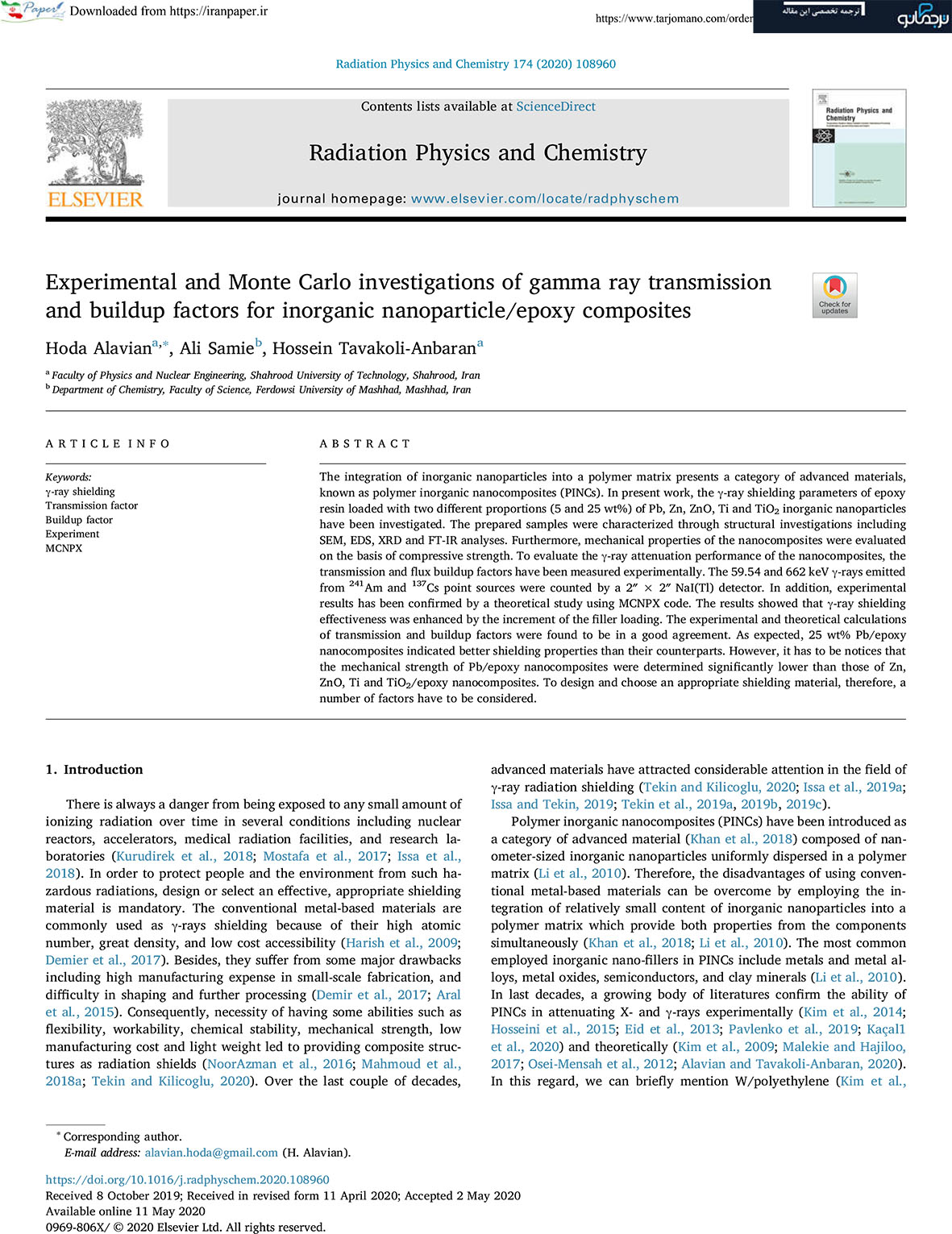Experimental and Monte Carlo investigations of gamma ray transmission and buildup factors for inorganic nanoparticle/epoxy composites
- 14/آبان/1402
- مقالات ژورنالی انگلیسی
- نویسنده : آزمایشگاه میکرودزیمتری نوترون
- 5 بازدید
- 0 نظر

The integration of inorganic nanoparticles into a polymer matrix presents a category of advanced materials, known as polymer inorganic nanocomposites (PINCs). In present work, the γ-ray shielding parameters of epoxy resin loaded with two different proportions (۵ and ۲۵ wt%) of Pb, Zn, ZnO, Ti and TiO۲ inorganic nanoparticles have been investigated. The prepared samples were characterized through structural investigations including SEM, EDS, XRD and FT-IR analyses. Furthermore, mechanical properties of the nanocomposites were evaluated on the basis of compressive strength. To evaluate the γ-ray attenuation performance of the nanocomposites, the transmission and flux buildup factors have been measured experimentally. The ۵۹.۵۴ and ۶۶۲ keV γ-rays emitted from ۲۴۱Am and ۱۳۷Cs point sources were counted by a ۲″ × ۲″ NaI(Tl) detector. In addition, experimental results has been confirmed by a theoretical study using MCNPX code. The results showed that γ-ray shielding effectiveness was enhanced by the increment of the filler loading. The experimental and theoretical calculations of transmission and buildup factors were found to be in a good agreement. As expected, ۲۵ wt% Pb/epoxy nanocomposites indicated better shielding properties than their counterparts. However, it has to be notices that the mechanical strength of Pb/epoxy nanocomposites were determined significantly lower than those of Zn, ZnO, Ti and TiO۲/epoxy nanocomposites. To design and choose an appropriate shielding material, therefore, a number of factors have to be considered.



نظرات یک دیدگاه جدید ارسال کنید.
برای ثبت نظر ابتدا باید وارد سایت شوید !